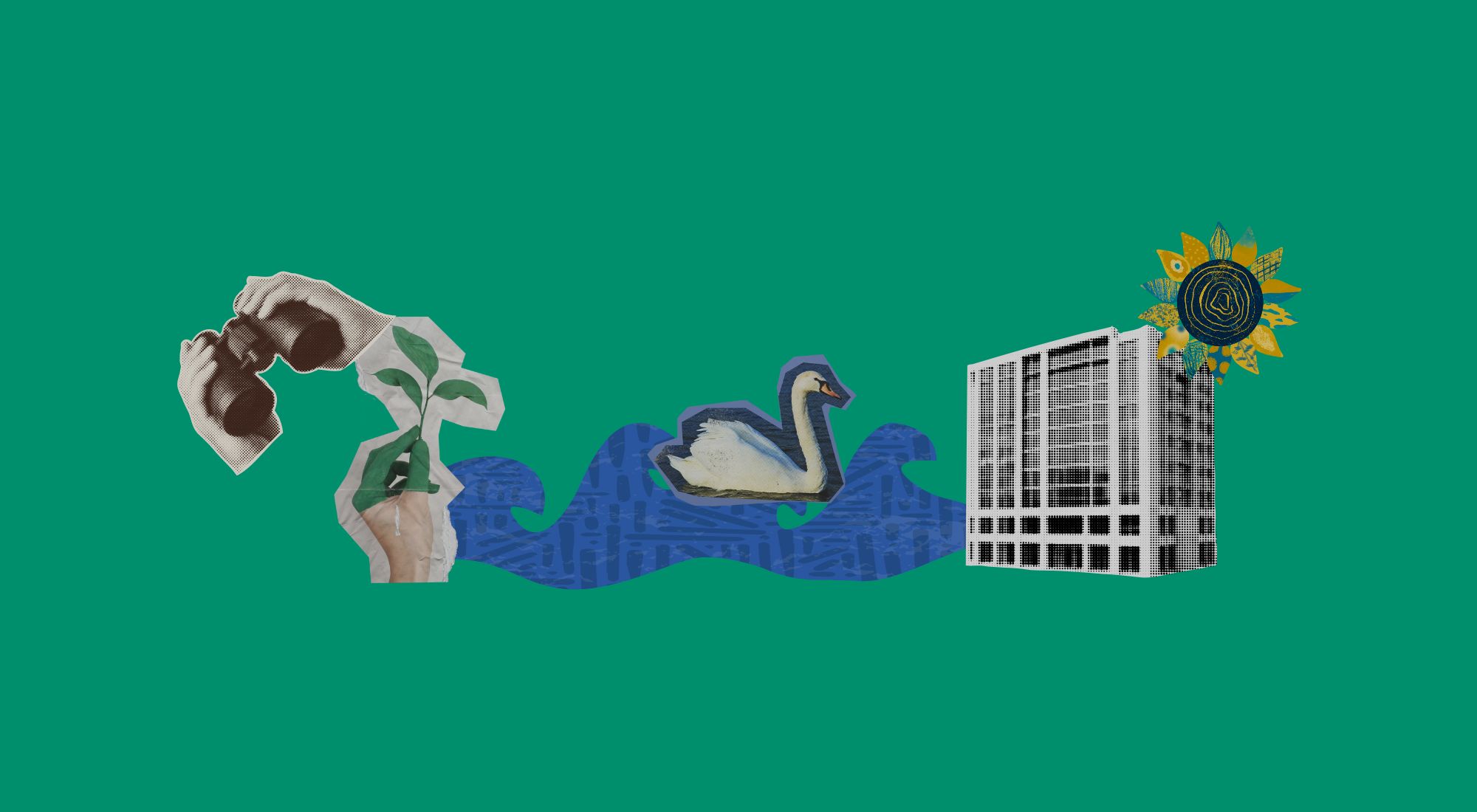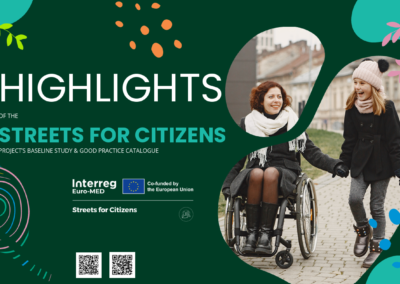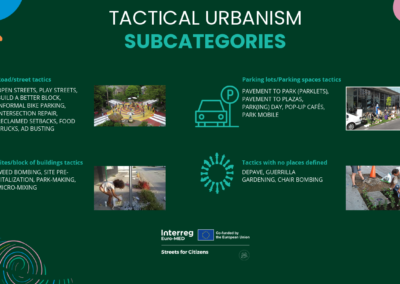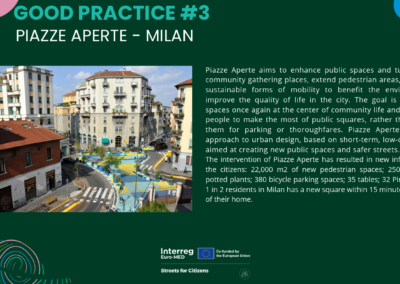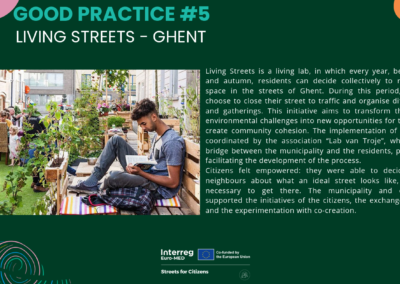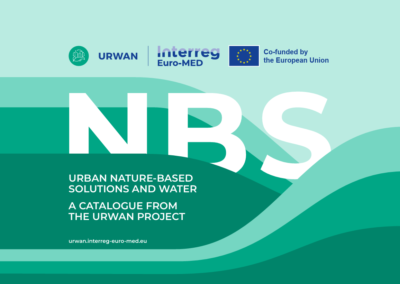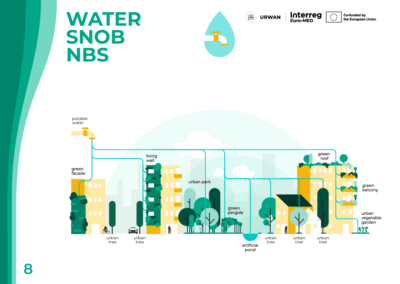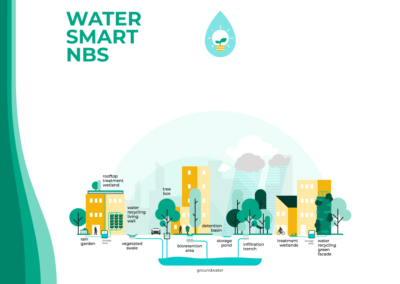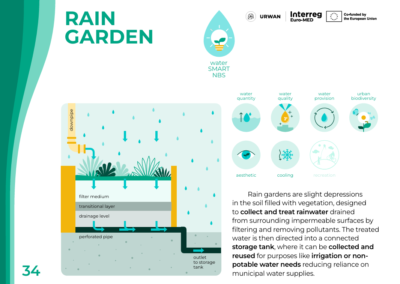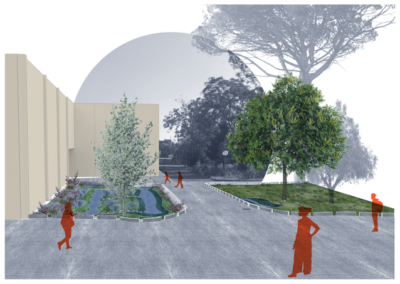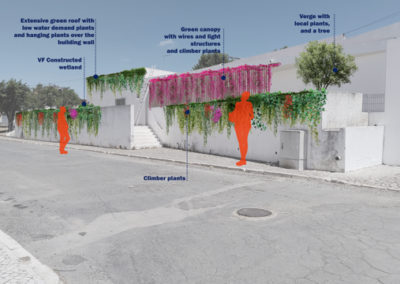Have you heard of tactical urbanism? Nature-based solutions? We have, thanks to our projects most actively involved in making urban spaces more sustainable. In doing so, they contribute to achieving the objectives of the Interreg Euro-MED Programme, the European Green Deal and the New European Bauhaus initiative. Let’s get started on the city of tomorrow!
What is the New European Bauhaus?
The New European Bauhaus translates the principles of the European Green Deal into visible urban planning and construction projects.
Through experimentation and funding, the New European Bauhaus pursues three core values:
- Sustainability in its broadest sense, from climate ambition to the circular economy, pollution reduction and biodiversity preservation;
- Aesthetics, ensuring an experience and style that go beyond the requirements of functionality;
- Inclusion for all: accessibility, diversity and affordability of the spaces created.
- Streets for Citizens, champion of tactical urbanism;
- URWAN, expert in water-efficient nature-based solutions.
Many projects from the Interreg Euro-MED Programme under the Green Living Areas Mission are involved in implementing these principles. Today, let’s focus on two of them:
Tactical urbanism: test operations to renew the city
What is tactical urbanism? It is an approach to transforming urban spaces based on temporary, low-cost developments co-designed with citizens. “Local governments benefit from low-risk, cost-effective ways to test urban design ideas. Citizens, in turn, are empowered to co-create public spaces that reflect their everyday needs” explains Dr Miklos Lukovics, communication manager of the Streets for Citizens project.
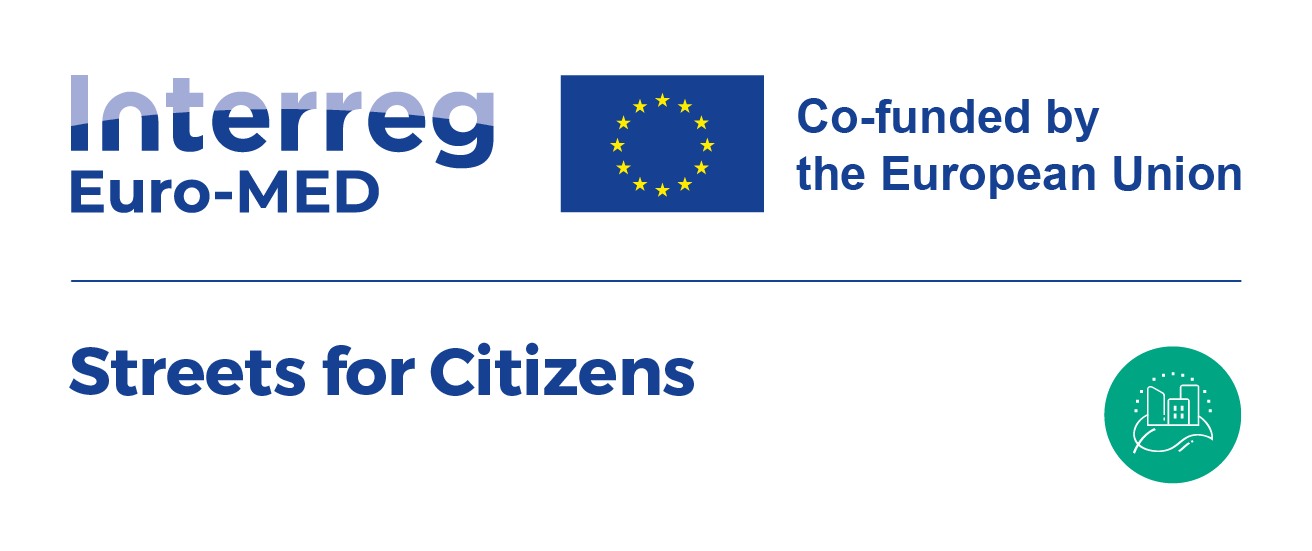
The Streets for Citizens project is therefore rolling out a two-step strategy.
On the inspiration side, Streets for Citizens has compiled a catalogue of successful tactical urbanism experiments from Barcelona to Milan, Ljubljana and Ghent. Increasing the space allocated to pedestrians through coloured markings, creating welcoming green spaces, rest areas and places for children… These examples all have in common to make public spaces more peaceful and allow for a better balance between uses.
This baseline study and catalogue is available in two formats:
- A dynamic and accessible presentation tool to ensure maximum dissemination to a wide audience, from decision-makers to citizens;
- A more traditional report format for technicians and planners who want more details.
The Streets for Citizens project will now go ahead with the experimental phase, continues Dr Lukovics: “Planned pilot actions include turning stairways into attractive and accessible public spaces, reclaiming car-dominated areas to create inviting community gathering places, and promoting walkability through tactical design.”
Involving residents is central to the approach developed by the project: “Each action is accompanied by locally adapted campaign messages such as ‘Designing cities for people, not cars’; ‘Let’s bring life to our public spaces’, ‘A more liveable space for everyone’, “Move smart – streets are for people’, ‘Walk for our city’, or ‘Enjoy the streets on foot or by bike.’ Together, these interventions and messages show the power of tactical urbanism to spark long-term change and reimagine our streets for citizens.”
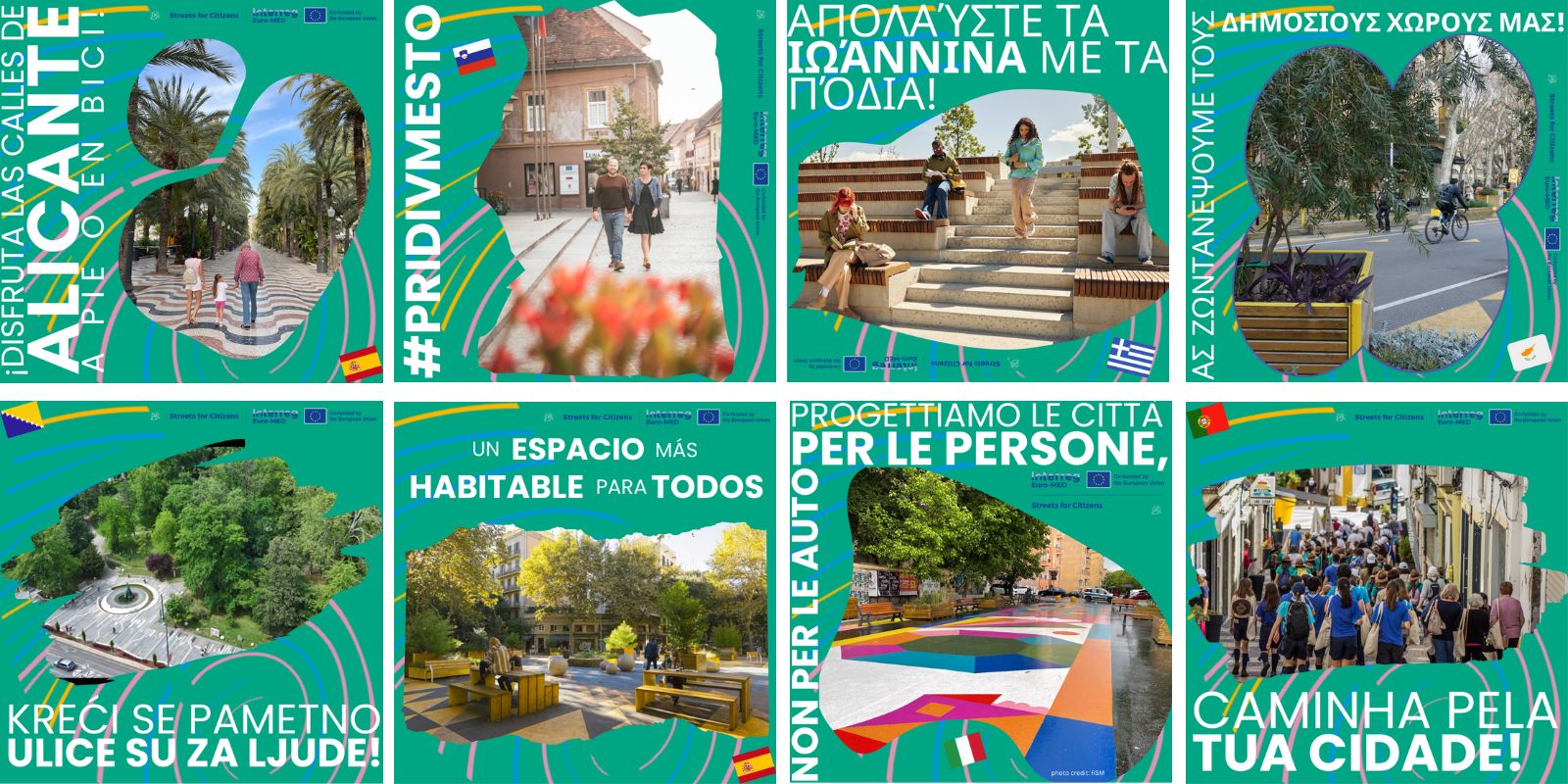
In tactical urbanism, prototypes that produce the expected results can then be perpetuated or disseminated so that they can be replicated elsewhere. This approach is perfectly in line with that of the Interreg Euro-MED Programme, which aims to capitalise on the reuse and transfer of its project results by other stakeholders. 😉
Nature-based solutions that are particularly water-efficient
What do a green building envelope, planting trees in the city, an artificial pond and a rain garden have in common? All these developments are based on the properties of ecosystems to enable better adaptation to climate change: water capture, carbon storage and cooling of spaces.
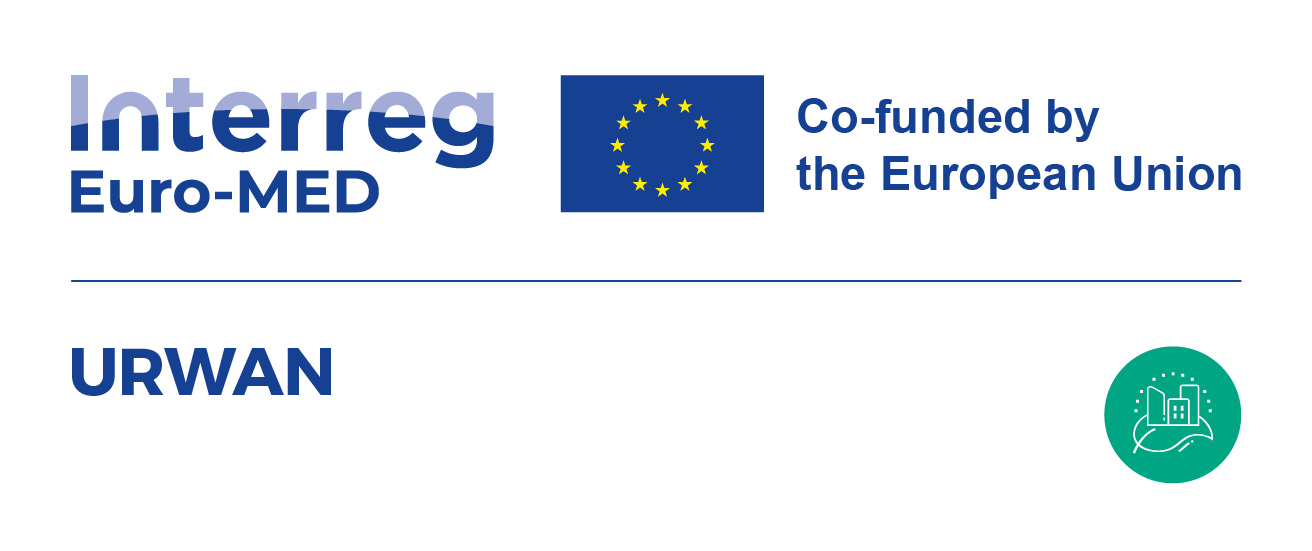
This is what we call nature-based solutions (NBS).
“Through greening interventions – such as depaving, shaded micro-spaces, and water-sensitive design – URWAN reimagines neglected areas as resilient, beautiful, and community-driven. These interventions visibly improve quality of life by enhancing comfort, access to green space, and a renewed sense of local identity” notes Giorgio Scavino, project communications officer of the URWAN project.
As you can see, it is not always necessary to build ‘heavy’ infrastructure to improve the resilience of people’s living areas. Better still, it is possible to mobilise unconventional water resources (rainwater, treated wastewater, domestic wastewater) to supply these developments.
This approach is at the heart of the URWAN project. In a highly educational catalogue, the URWAN project describes the benefits, drawbacks, installation and maintenance costs of 20 nature-based solutions divided into two categories:
- Water snob NBS, which require the use of drinking water from public distribution networks;
- Water smart NBS, which use alternative water resources. Some water smart solutions even purify these resources, such as water purification wetlands.
From Rome to Portugal, projects are well underway!
In the coming months, the URWAN project will finance the transformation of a school playground in Rome. There are multiple challenges: 1) creating a recreational and educational space around nature; 2) offering an alternative to soil artificialisation; 3) providing a response to heat waves and rainwater runoff.
On this last point, the project is working on many levels. The removal of soil sealing will allow for better water infiltration. A rain garden will capture rainwater running off roofs and paved areas. Finally, two bioretention areas will capture water during storms and a storage tank will store it for future reuse. “Expected outputs include measurable reductions in water use, lower surface temperatures, enhanced biodiversity, and increased environmental awareness among students and local residents” says Andrea Vignoli, General Coordinator of URWAN on behalf of ANCI Lazio (Associazione Regionale Comuni del Lazio).
Next stop: the city of Cuba, in Portugal! In an office building with a car park, alternative water resources will be used to supply the site’s future green infrastructure, including a green roof and a plant-covered pergola. Rainwater will be collected by a rain garden and a wetland will naturally treat blackwater from a nearby sanitation network. “A truly multifunctional space that promotes biodiversity and microclimate regulation”, concludes Jose Nuñez, project manager of the non-profit organisation Make It Better.

